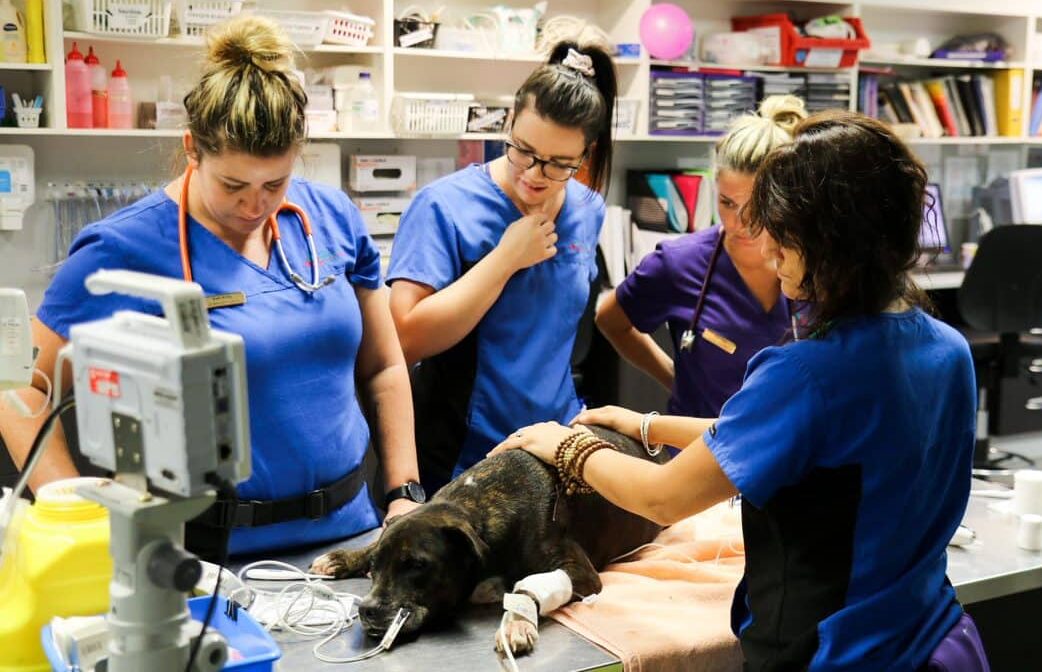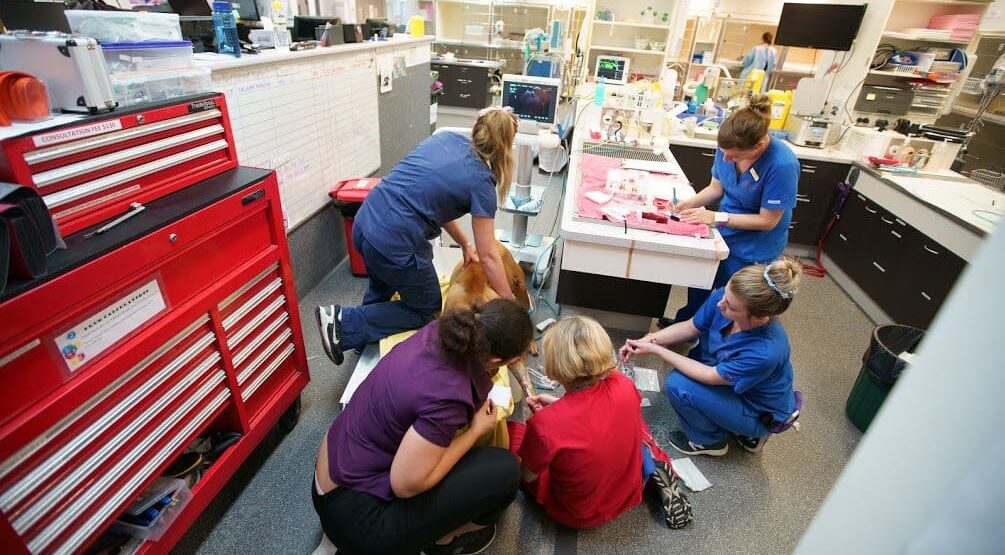Emergency veterinary nurses and technicians play a crucial part in providing life-saving care to animals in the most critical conditions. Responsible for managing and treating animals during emergencies, vet nurses and techs ensure that pets receive timely and attentive care in a fast-paced and high-pressure environment. And to excel in this field of veterinary nursing, you’ll need to possess a unique combination of skills that enable you to think on your feet, remain calm under pressure, and provide compassionate care to both animals and their owners.
In this article, we’ll guide you through six essential skills required for emergency veterinary nurses and technicians. These qualities and competencies are needed to provide a high standard of patient care in a clinical emergency setting. Whether you’re considering a career in emergency veterinary care or want to enhance your existing veterinary nursing skills, this article will give you valuable insights into the abilities that are essential for success.
What are the essential skills of emergency vet nurses and technicians?
Emergency Vet Nurses & Techs Skill #1 – Critical Thinking
Critical thinking is the first and one of the most crucial skills required for vet nurses and technicians, especially those working in emergency. These skills enable quick and accurate decisions, even in high-stress situations. Critical thinking involves analyzing information, identifying the problem, and evaluating possible solutions. Problem-solving is the process of using critical thinking to work as a clinical team to develop and implement a solution to a problem.

Emergency veterinary nurses and technicians must also be able to adapt their problem-solving approach to the specific needs of each patient. Different pets may present with different symptoms, and every case requires a unique treatment plan. The ability to assess each case individually and collaborate towards an appropriate solution is essential for providing high-quality emergency veterinary care.
Emergency Vet Nurses & Techs Skill #2 – Task Switching
Task switching is another essential skill for emergency vet nurses and technicians. In a fast-paced clinical emergency setting, it is common to encounter multiple patients with different needs, each requiring individualised attention. Similar to multitasking, task switching involves the ability to rapidly swap between multiple tasks, while maintaining a high level of accuracy and attention to detail.
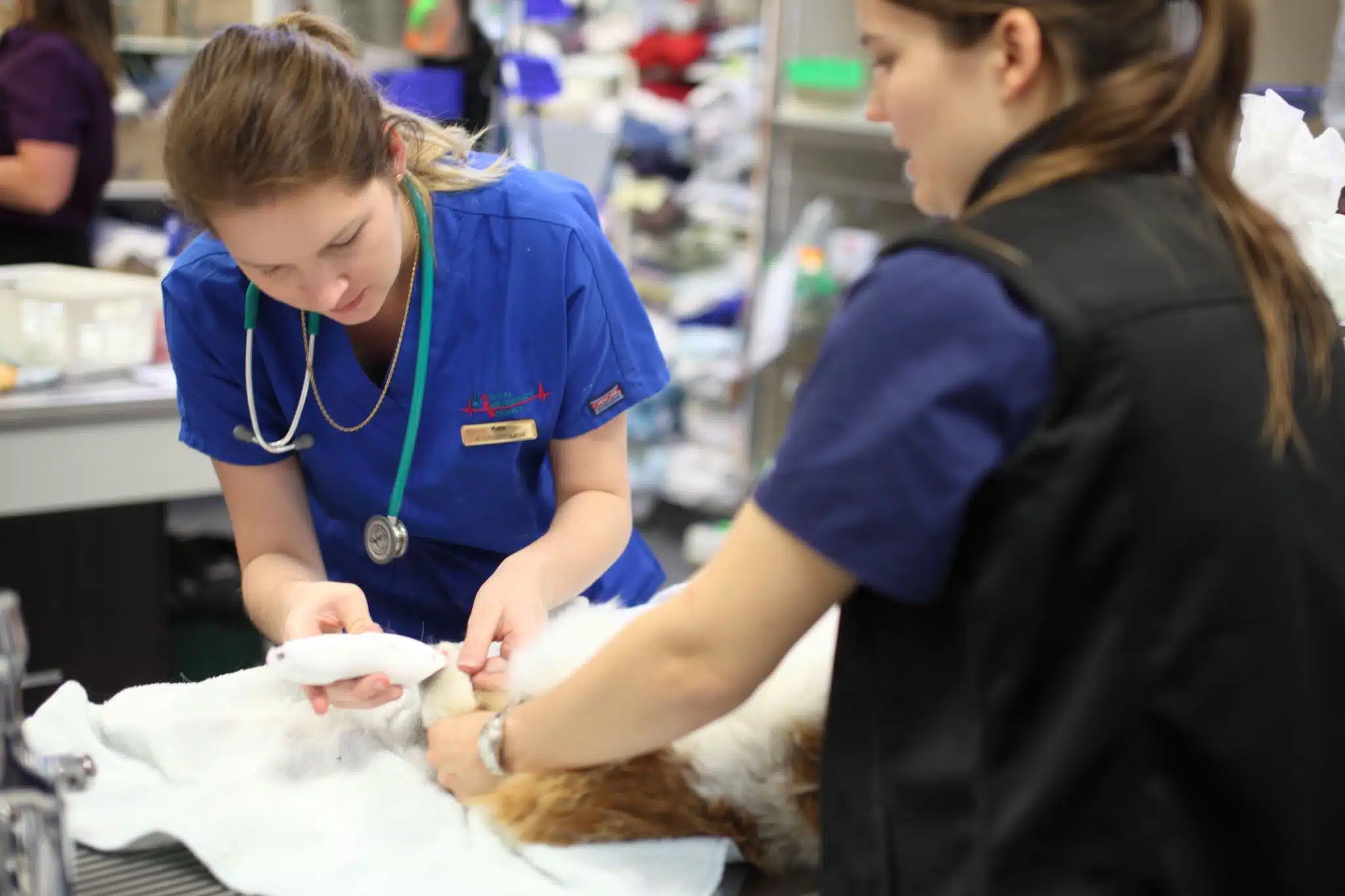
The priority of these tasks is based on the urgency of each patient’s needs. Emergency veterinary nurses and technicians must be able to quickly assess each patient’s condition and determine which tasks require immediate attention. This may involve making split-second decisions, especially for patients requiring life-saving immediate treatment (such as a patient in respiratory distress). With task switching, vet nurses and techs can ensure each patient receives the timely and effective care they need.
Emergency Vet Nurses & Techs Skill #3 – Communication Skills
As with work in any veterinary setting, effective communication skills are incredibly valuable. Emergency vet nurses and technicians must be able to communicate effectively with pet owners during presentation and triage, throughout treatment, and at the discharge of the patient. And in an emergency environment, the ability to listen actively to pet owners’ concerns and provide empathetic support to those who are distressed or anxious is highly valued.
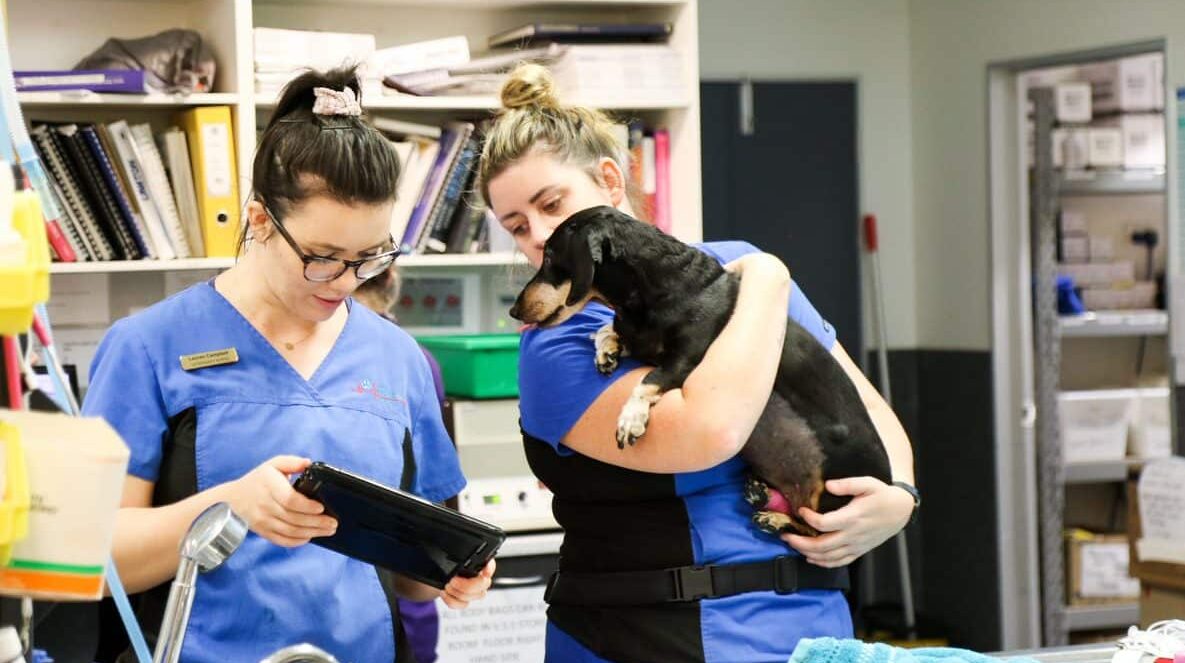
And it’s more than just verbal communication – emergency veterinary nurses and technicians must also be proficient in written communication. Accurate and concise documentation of patient records plays a vital role in emergency veterinary care, as it enables all members of the veterinary team to provide continuous care to each patient and ensure that they receive the appropriate treatment.
Emergency Vet Nurses & Techs Skill #4 – Compassion and Empathy
Compassion and empathy are essential skills for emergency vet nurses and technicians and all within the veterinary profession. In a clinical emergency setting, pet owners and their pets may be experiencing high levels of stress, fear, and anxiety. Emergency veterinary nurses and technicians must be able to respond to these emotions with compassion and empathy, providing comfort, support, and understanding to both pets and their owners.
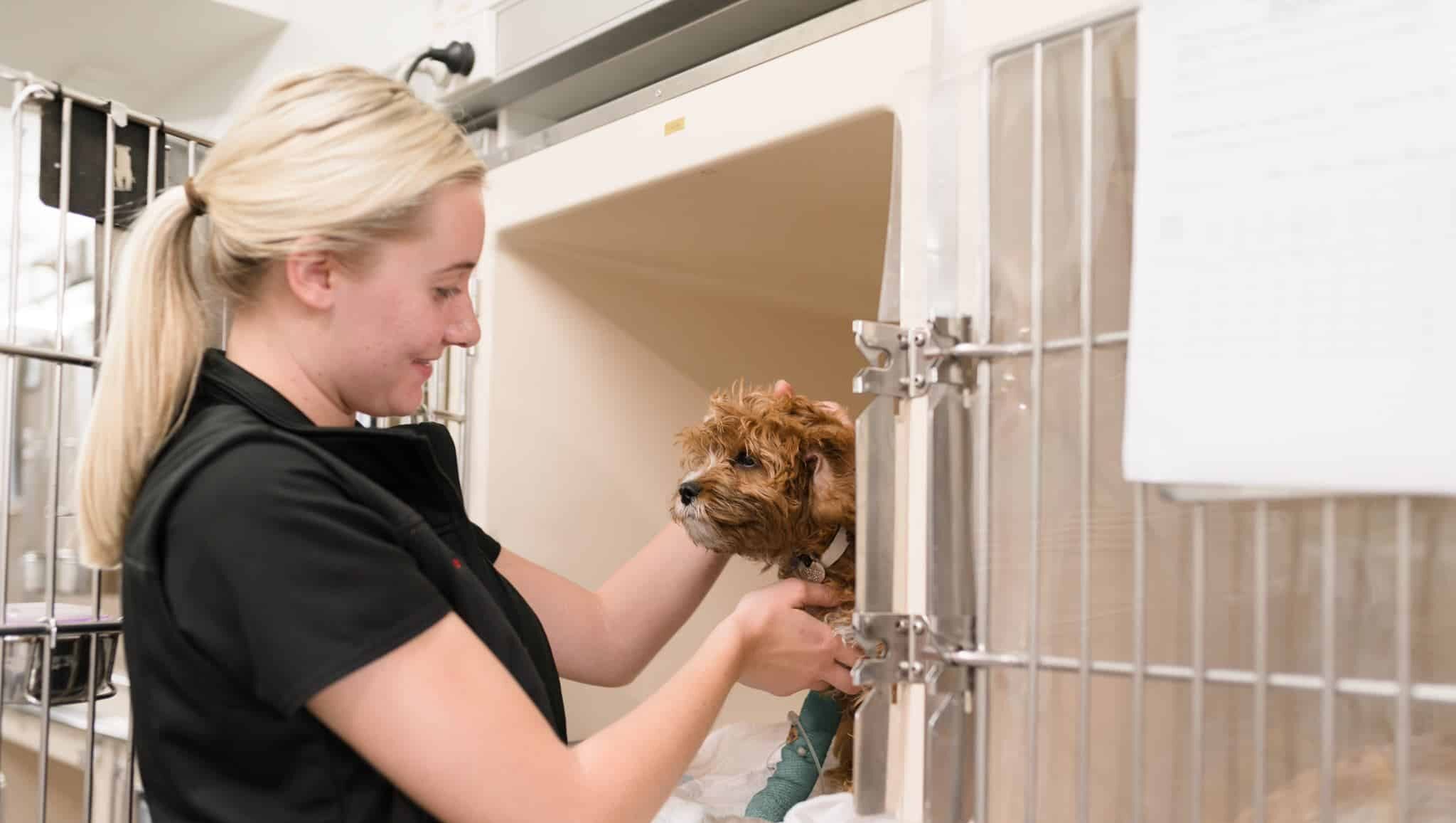
In addition to providing emotional support to patients and their owners, compassion and empathy are also essential in building rapport with clients. Emergency veterinary nurses and technicians who demonstrate compassion and empathy towards their patients and their owners are more likely to lead to increased client satisfaction. Unlike a general veterinary practice where client relationships are often lifelong, providing a high level of support in an emergency setting will be truly valued by clients when they need it most.
Emergency Vet Nurses & Techs Skill #5 – Technical Skills
Technical skills involve the ability to use a variety of specialised medical equipment and technologies to provide effective patient care. Emergency vet nurses and technicians must have a strong foundation in veterinary medicine, anatomy, and physiology to perform their duties effectively. They’re involved in performing diagnostics such as x-rays and laboratory tests, and understanding clinical results to provide accurate assessments of a pet’s condition to the rest of the team.

Key technical skills in an emergency setting include monitoring and medication. Being able to monitor a patient’s vital signs and respond appropriately to changes in these values can be life-saving. This can also include the ability to perform various medical procedures, such as placing catheters (IV, arterial, nasal & urinary), intubation, and wound care. Emergency veterinary nurses and technicians must be able to work efficiently and effectively in a fast-paced, high-pressure environment, often performing multiple procedures across several patients.
Further education and training for vet nurses in technical skills are also crucial to stay up-to-date with advances in veterinary medicine and updated procedures and practices. As veterinary medicine continues to evolve, emergency veterinary nurses and technicians must be able to focus on the ongoing development of technical skills through continuing education such as workshops, seminars and veterinary events.
Emergency Vet Nurses & Techs Skill #6 – Adaptability
Lastly, adaptability is the final of our key skills for emergency veterinary nurses and technicians. In a clinical emergency setting, the situation can change rapidly, and emergency veterinary nurses and technicians must be able to adapt quickly to these changes to provide effective patient care. This is similar to skill switching, in that adaptability involves the ability to be flexible and open-minded, to approach situations with a problem-solving mindset and to be willing to learn and try new approaches.

Working in a high-pressure and fast-paced environment by nature involves the ability to adapt. And while you won’t be able to learn how to adapt through reading it in a book, this skill will eventually come naturally with exposure to veterinary emergency. When a patient is critical, time is of the essence, and it can be necessary to quickly adapt to achieve the best possible outcome. So learn from your experienced team members who will support you on how to adapt and shift focus quickly.
To do this effectively, we’ve highlighted just a few of a wide range of essential skills, including critical thinking, task-switching, and adaptability. These skills can be developed and honed through experience and training, making emergency veterinary nursing and technician roles an exciting and rewarding career choice for those with a passion for patient care.

